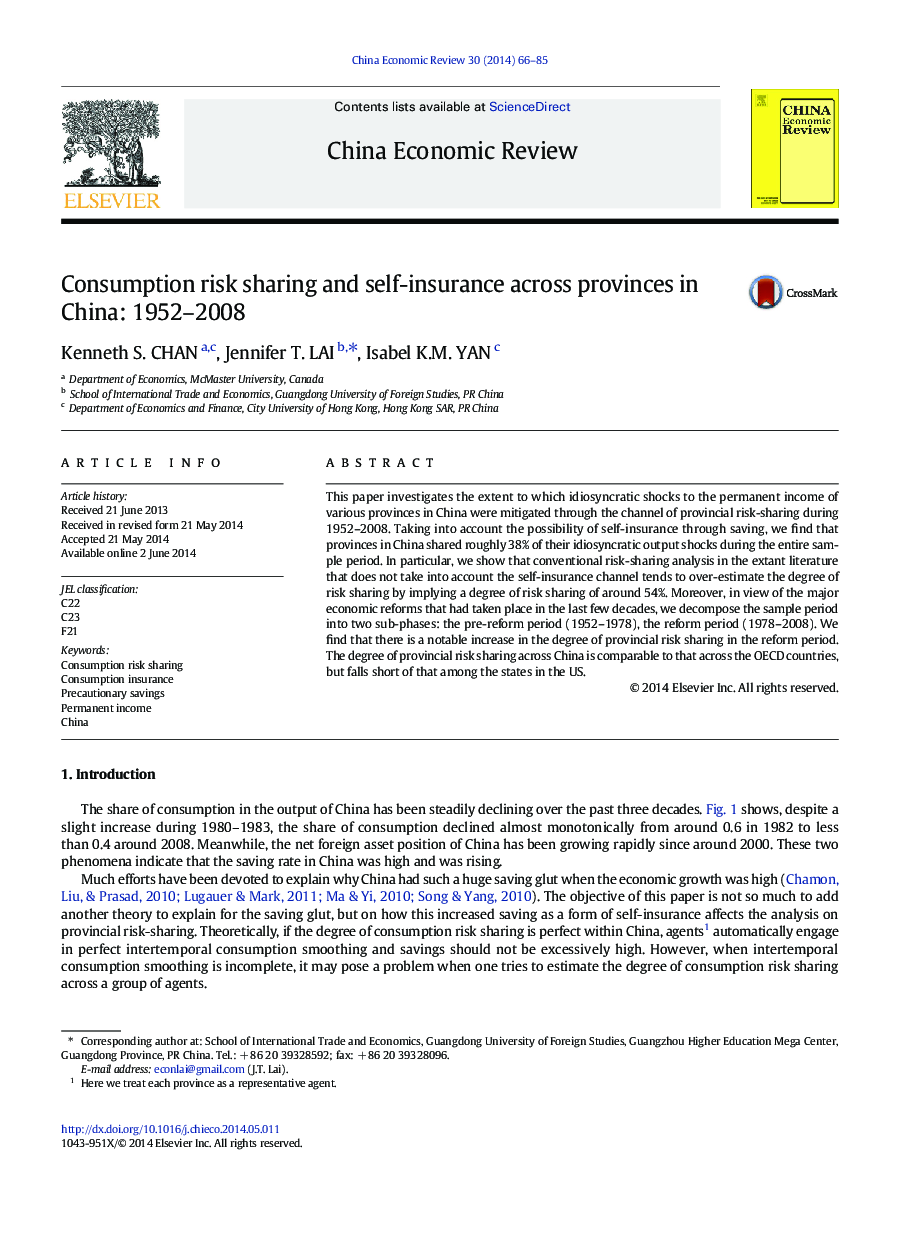| Article ID | Journal | Published Year | Pages | File Type |
|---|---|---|---|---|
| 5047347 | China Economic Review | 2014 | 20 Pages |
â¢We empirically assess the degree of provincial consumption risk sharing in China over the period of 1952-2008 by separating the mixed effects of risk-sharing and self-insurance on consumption insurance.â¢We find that provinces shared roughly 38% of their idiosyncratic output shocks during the entire sample period. Conventional analysis that ignores the self-insurance channel tends to over-estimate this degree of risk sharing substantially.â¢We find that there is a notable increase in the degree of provincial risk sharing in the reform period.
This paper investigates the extent to which idiosyncratic shocks to the permanent income of various provinces in China were mitigated through the channel of provincial risk-sharing during 1952-2008. Taking into account the possibility of self-insurance through saving, we find that provinces in China shared roughly 38% of their idiosyncratic output shocks during the entire sample period. In particular, we show that conventional risk-sharing analysis in the extant literature that does not take into account the self-insurance channel tends to over-estimate the degree of risk sharing by implying a degree of risk sharing of around 54%. Moreover, in view of the major economic reforms that had taken place in the last few decades, we decompose the sample period into two sub-phases: the pre-reform period (1952-1978), the reform period (1978-2008). We find that there is a notable increase in the degree of provincial risk sharing in the reform period. The degree of provincial risk sharing across China is comparable to that across the OECD countries, but falls short of that among the states in the US.
